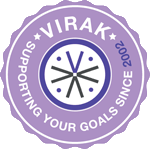Design Thinking Training Course
Design Thinking is an iterative method to inspire innovations or change organizations by integrating users or customers in a very early stage. The complexity of the problem will be disassembled by gathering all aspects thus widening the problem space. Deviated from this assembly a need finding analysis will be elaborated and executed. That will lead to the first approach of a solution which will be narrowed within the solution space by prototyping iteratively, to be verified by the user. Every phase will leave space for several iterative steps until the encouraging solution will be created and tested by the user.
This course will practice how the method of Design Thinking can lead to the innovation of products or service processes. It also can be applied to renovate or transform organizations.

Design Thinking enables the participants to put themselves into the position of a user or customer. The early integration of clients helps to find the needs in an empathic manner. By an iterative way of trial-and error the group is heading towards the solution that will satisfies the client’s need rather than dictating what the need of the client has to be.
How Design Thinking works
• 1. Session "Problem Finding": accomplish a common understanding of the entire picture, i.e. a discussion of the problem or the challenge by gathering and posting of all aspects.
• 2. Session "Good ideas originate from good questions": concentrate the challenge into one concise question "„"How might we optimize | improve | re-design … (something) … for … (user) … under consideration of … (circumstance)?"
• 3. Session "Need finding": cycle, target group, focus group, observe, point of view.
• 4. Session "solution finding: generate ideas, built prototypes, story-telling, testing, optimizing.
During all steps the participants will proof critically in reflection with the client whether they are still on the right track of the problem | solution approach they are aiming for. They are prepared to adapt it iteratively to create the solution with promising success.
During the phase of problem finding the participants will concentrate only onto the problem | the challenge to elaborate an almost entire and precise description of it.
Within the transition phase of need finding they will discover by empathy (put themselves into the position of the user) what is the selection criteria of the customer, on which basis does he make up his mind, what is his real value?
An interdisciplinary composition of the team is preferred instead of just a multidisciplinary one (lateral thinker and extrinsic users are welcome).
The solution arises from the synthesis of the need finding, a prototype (product) or a role-playing (process) serves as the test by the user before it will get into common use
Learning Objectives of the method for Design Thinking
This course helps to find out needs of users and customers almost tailor-made and to adopt products or processes accordingly. After some exercises one of the team-member with talent and skills to moderate should be capable to use the method for all similar challenges in the future without the support of the moderator.
General skills- Learn how to adapt products or services according to people’s need rather than pretending them.
- Recognize that a market analysis executed for some years is often limping behind the actual market so an iterative approach corresponds more to actual needs.
- Experience that time-to-market is fundamental, speed is more of essence than perfection.
- Become confident with the behavior of the customer who decides rather than the product developer. His decision is more driven by emotions rather than by rare facts.
- How to elaborate and formulate a problem in only one sharp question.
- The sharper the formulation of the question the better the discussion and solution.
- Learn to practice the method of Design Thinking
